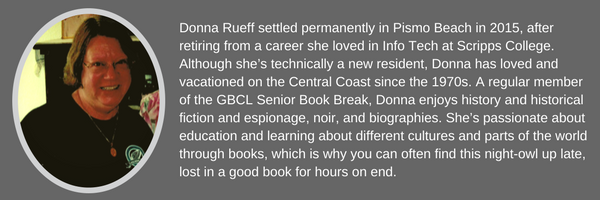Katrina, Harvey, Maria, Florence: everyone knows the names of these recent major U.S. hurricanes that caused immense physical and psychological damage. What few people know about, and which no one alive today remembers, is the hurricane of September 8, 1900 that decimated Galveston Island and part of the Texas southeastern coast. Erik Larson’s 1999 book is subtitled: “A Man, a Time, and the Deadliest Hurricane in History.” The lack of scientific instruments at that time (those on the island were destroyed in the storm) can’t prove that it was the deadliest in the U.S., but the extreme loss of life and property, the sheer devastation on the island and along its path through the U.S. as it exited, appear to remain unparalleled.
Galveston Island is a barrier island that stretches off the southeastern coast of Texas. The Gulf of Mexico lies on the southeastern side of the island, and Galveston Bay lies between Texas and the island. In September 1900, a strong hurricane approached from the summer-warmed Gulf bringing a huge storm surge and rain while simultaneously strong north and northeast winds pushed the Bay water onto the island on the land side. With a maximum island elevation of under 9 feet, even the care taken to build houses on stilts and with strong materials proved to be no match for Nature’s ferocious squeeze play. Many people who thought their homes would be a safe haven in a storm discovered otherwise, as their houses washed off the foundations, then disintegrated into mere kindling from the forces of water and wind.
The loss of life was catastrophic. It was impossible to determine the exact number of deaths, but the estimates range from 6,000 to 10,000 people lost, not including those lost along the Texas coast. Many people were simply washed out to sea and disappeared forever. As workers started combing through the wreckage and finding bodies which became less identifiable with each hot passing day, they finally resorted to building funeral pyres on the beach, even if the bodies had not been identified.
Galveston never recovered from the devastation. Prior to the hurricane, it was a vibrant, cosmopolitan, modern city with a busy port. While they were rebuilding, a vast oil field was discovered in Beaumont, Texas, and Galveston lost its competition with Houston. The mainland had the advantage of being nearer main railroad links and a more reliable infrastructure that was less vulnerable to the utter destruction Galveston had experienced. Houston may have been deemed safer then, but in 2017, hurricane Harvey showed us what extensive damage can still be done to one of the largest U.S. cities (minus the huge loss of life thanks to evacuations and better preparations).
So—who was Isaac, and why was this HIS storm? Isaac Cline was a meteorologist, scientist, and physician who was interested in studying the effects of weather on health. He joined the newly-formed U.S. Weather Service in 1882. In 1891, Cline was by then one of the Service’s best men and was sent to run the Texas Section of the U.S. Weather Bureau in Galveston. He and his small staff, which later included his younger brother Joseph, had responsibility for checking and reporting instrument readings and forwarding that information to the Washington D.C. central office, from where appropriate information was telegraphed to the various U.S. offices.
When Willis Moore was named the head of that office, the trouble started. Although trained as a scientist and meteorologist, Moore was what we recognize today as a narcissistic egomaniac who “never missed a chance to burnish the reputation of the Weather Bureau or boost his own political stature.” (p. 74) That meant he would ignore facts which he perceived to be inconvenient, and when it concerns the weather, that’s a problem. E.g., he was “reluctant” to allow the Bureau to use words like “hurricane” and “cyclone” so people would not become “needlessly” alarmed. As a consequence, people made decisions about their activities, such as taking a boat or ship to sea, that in the end endangered their lives or even caused loss of life.
Other action taken by the Bureau added to the eventual catastrophe. Cubans had long experience with hurricanes. They knew a bad one was coming and most likely headed across the heated Gulf waters toward Galveston. Moore had placed a Bureau rep in Havana after the war with Spain. That rep “saw the people of Cuba and the Indies as a naïve, aboriginal race in need of American stewardship.” (p. 103) The forecast of the Cubans, which was accurate, was never released outside of Cuba, and worst of all, never sent to Cline in Galveston. Instead, the Bureau predicted the storm would take the usual path up the U.S. Atlantic coast, indicating it wasn’t much to worry about.
Cline and the Galveston office never received a clear hurricane warning from the Bureau. He had no advance warning in time to allow Galvestonians to leave the island by train or boat. In essence, they were trapped there during one of the fiercest hurricanes ever to hit the island AND with the wind pushing in water on the island’s OTHER side with no shelter beyond their flimsy (in those conditions) homes.
Cline and his brother Joseph realized something was wrong by the morning of September 8. Instrument readings and the booming of deep ocean swells told them both that there might be trouble ahead, but they had no way to judge what or how bad it might be. Cline did suggest to some Galvestonians that they should find shelter that day, but he was careful not to violate the Bureau taboo of spreading alarm among the populace. In hindsight, we might ask why he didn’t act more strongly on the few facts he saw and on his good intuition. He did not violate “an unwritten tenet of bureau culture as it had evolved under Willis Moore: Do not ever let your own star shine more brightly than the chief’s.” (p. 249) It’s my opinion that the blame for what happened in Galveston should be laid at the feet of Moore, making it MOORE’S storm. Cline didn’t have many facts—Moore ignored them.
The Cline family and many other people gathered in the Cline home to ride out the storm. At some point, the house lifted off its foundation and broke apart, casting Isaac and 2 daughters into the water through the window of the upstairs bedroom where they sought shelter as the house rolled. Had they been standing anywhere else in that room, they probably would have drowned, as did most of the others there. Isaac, his 3 daughters, and Joseph survived by hitching rides on floating debris. Isaac’s pregnant wife Cora did not survive. He was devastated. Her body was eventually found, identified by her clothing and wedding ring, which he wore for the rest of his life.
I first read Isaac’s Storm several years ago and enjoyed it immensely. I thought of it for this blog because of hurricane Florence, and re-reading it has moved it to my favorites list. I wanted to share it with others. Who knew weather could generate such an intriguing story!
Larson did an excruciating amount of research of archival materials, written and oral accounts by survivors, newspaper articles, histories of ships lost in Caribbean hurricanes since the time of Columbus, and every imaginable source that could be found. (My favorite example is this: the list of some of the donors who sent post-hurricane donations includes $12.25 sent by the Kansas State Insane Asylum. p. 244) Larson has the gift of pulling it all together in a form that reads like a novel. It’s a fine example—and a warning—of the dangers of hubris, both personal and national. In the heady times at the turn of the century, technology progressed very rapidly and in ways that made some think humans could even control the weather. In our current times with climate change such an issue, it’s clear humans can AFFECT the weather to a certain extent, which is not the same as CONTROLLING it. Nature will likely always have her way, but we are improving ways to deal with the EFFECTS of weather. Even so, if readers want to experience a hurricane, the safest way is to read Isaac’s Storm in their warm, DRY home.

